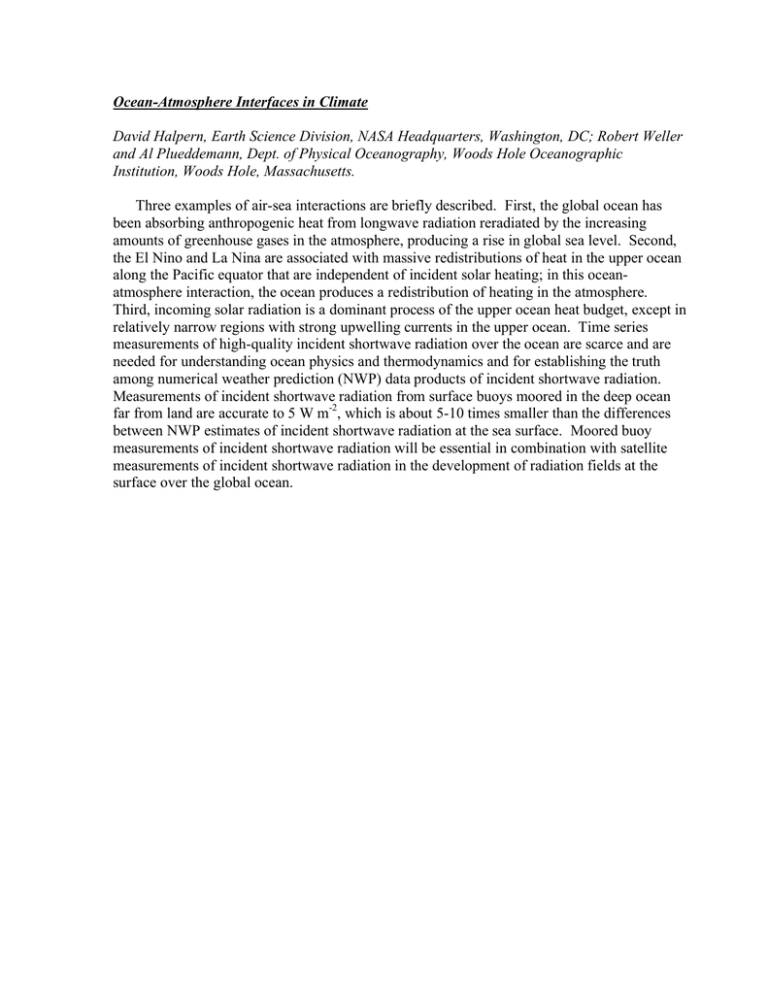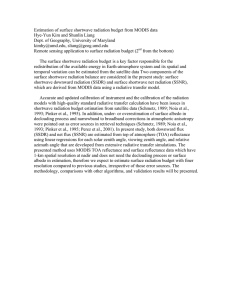Ocean-Atmosphere Interfaces in Climate
advertisement

Ocean-Atmosphere Interfaces in Climate David Halpern, Earth Science Division, NASA Headquarters, Washington, DC; Robert Weller and Al Plueddemann, Dept. of Physical Oceanography, Woods Hole Oceanographic Institution, Woods Hole, Massachusetts. Three examples of air-sea interactions are briefly described. First, the global ocean has been absorbing anthropogenic heat from longwave radiation reradiated by the increasing amounts of greenhouse gases in the atmosphere, producing a rise in global sea level. Second, the El Nino and La Nina are associated with massive redistributions of heat in the upper ocean along the Pacific equator that are independent of incident solar heating; in this oceanatmosphere interaction, the ocean produces a redistribution of heating in the atmosphere. Third, incoming solar radiation is a dominant process of the upper ocean heat budget, except in relatively narrow regions with strong upwelling currents in the upper ocean. Time series measurements of high-quality incident shortwave radiation over the ocean are scarce and are needed for understanding ocean physics and thermodynamics and for establishing the truth among numerical weather prediction (NWP) data products of incident shortwave radiation. Measurements of incident shortwave radiation from surface buoys moored in the deep ocean far from land are accurate to 5 W m-2, which is about 5-10 times smaller than the differences between NWP estimates of incident shortwave radiation at the sea surface. Moored buoy measurements of incident shortwave radiation will be essential in combination with satellite measurements of incident shortwave radiation in the development of radiation fields at the surface over the global ocean.



